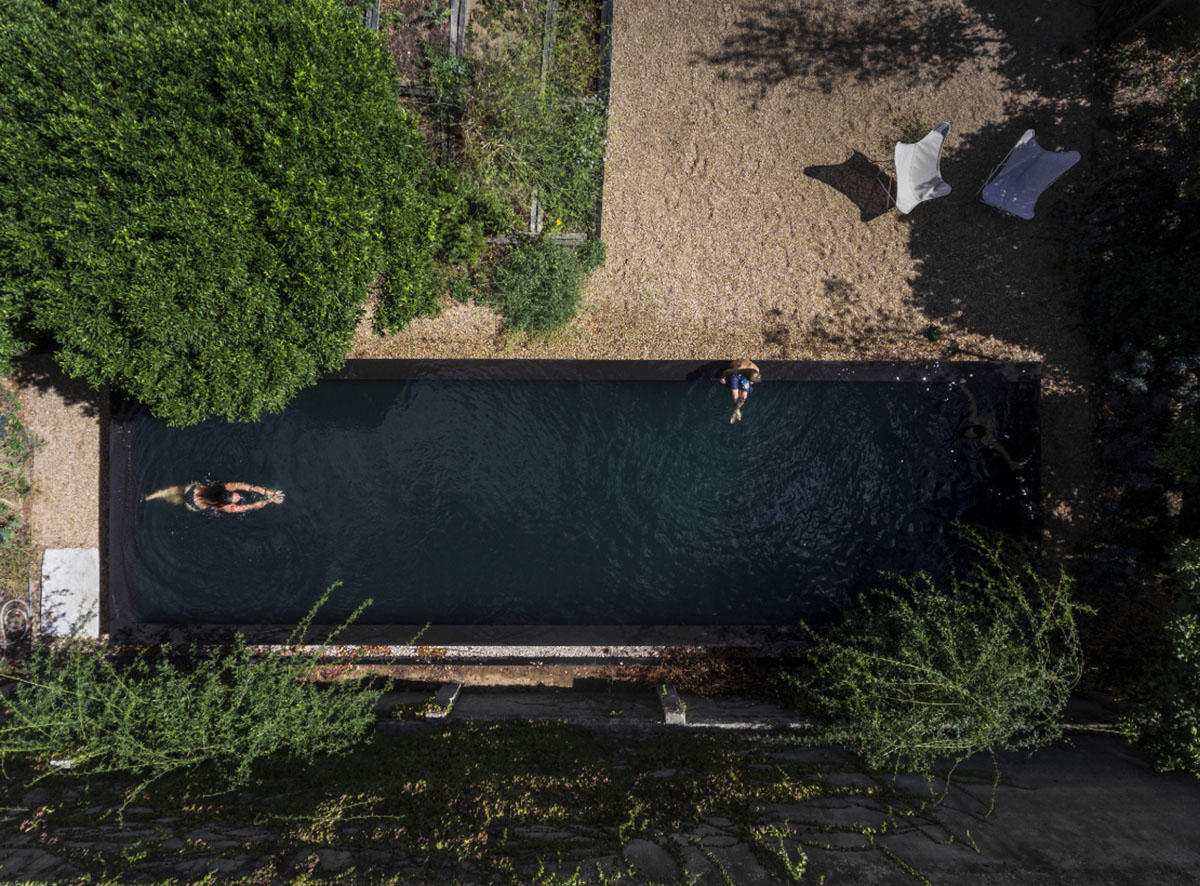Submitted by WA Contents
Extrastudio converted former winery in Portugal into a new family home with red mortar walls
Portugal Architecture News - Sep 11, 2017 - 15:17 13395 views

Lisbon-based architecture practice Extrastudio has converted an old winery into a two-storey family home in a small village in Azeitao, located south of Lisbon. Named Red House, the secluded house is located between local Portugese houses protected by hills from the Atlantic Ocean, the area has a mild Mediterranean microclimate, creating the ideal conditions for growing grapes, producing some of the country’s finest wines.

Extrastudio covered the whole facades of the house with red pigmented mortar, creating contrast with black opaque windows. The former winery was built by the client’s grandparents at the beginning of the 20th century. After years, the client wanted to transform the old winery into a liveable place by keeping the original structure of the building.
The original structure is set back from the main road and surrounded by neighbours, accessible along a narrow alley. The site has a small orchard of orange trees, an oasis in the middle of the village.

The client wanted to preserve this orchard as part of the project. The existing trees were protected at the project's site. The house's one facade is adjacent to neighbouring property so this facade doesn't have any windows. A 14-meter long window was cut into the west façade facing the orchard, turning the interior and exterior into a single space.
A courtyard was inserted into the corner abutting the adjacent properties, allowing light to enter the darkest areas of the house. The public areas of the house are designed on the ground floor, occupying the entire footprint.

The studio arranged private areas on the upper level, flanking the facades, generating a sequence of strategically placed voids, which create double and triple height spaces on the ground floor below. The generous scale recalls the building’s former use.

The architects created a 9-meter high ceiling inside, which gives a palace-like dimension to the entrance hall and open-air showers are possible in the courtyard.
A white floor reflects daylight in the interior, mirrored walls make spaces seem infinite, trapped between reflection and reality, while sliding windows open the entire living room to the garden on hot summer nights.

Designed to suit the way of living in the South, the house was envisioned with a stark but informal atmosphere, where private matters could coexist with a table full of family and friends.

"All existing materials were preserved and upcycled during construction; the old roof tiles were reused, stone was transformed into sills, the timber roof structure became an exterior deck. Retaining the existing walls meant confronting primordial Mediterranean construction techniques, which predated the industrialisation of materials," said the architects.

"To make old and new mortars compatible, a lime mortar was developed by a local company working with millennial techniques, combining pure lime with pozzolans."
"Once it is exposed to oxygen in the air, the mortar will begin to petrify, slowly turning into stone. A natural red pigment was added to the mortar, to reinforce the building’s presence, allowing the house to age gradually and changing its tonality, without ever requiring a coat of paint. Over the days and months, the colour of the house alters, lighter or darker depending on the humidity, almost black when it rains."

A reflecting pool was designed in the garden to emphasize the house’s Mediterranean character. The pool is raised above the ground recalling an old irrigation tank, the black pool mirrors the sky.
Since it is not possible to distinguish limits or edges, swimming here is a primordial act; the body in water floats in an absolute void. In May, when the scent of the orange trees fills the night air, the aroma is intoxicating.





















All images © Fernando Guerra | FG+SG
> via Extrastudio
